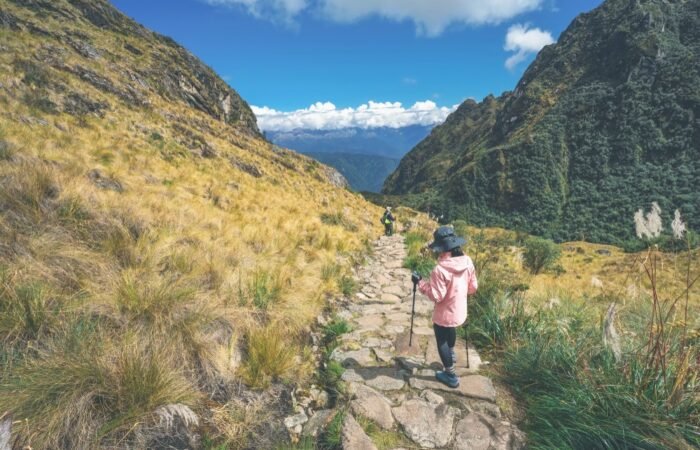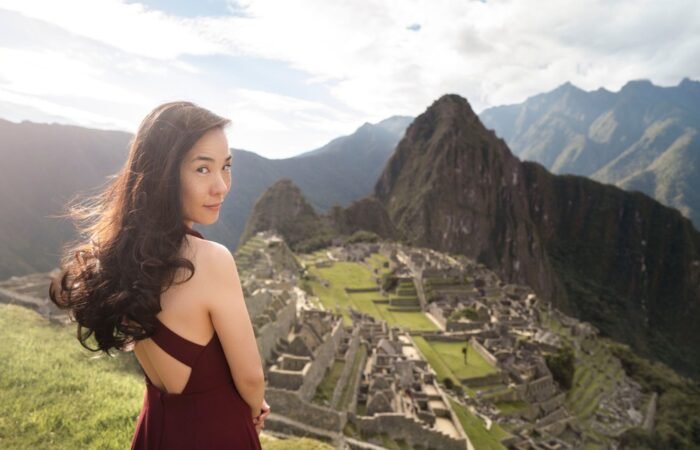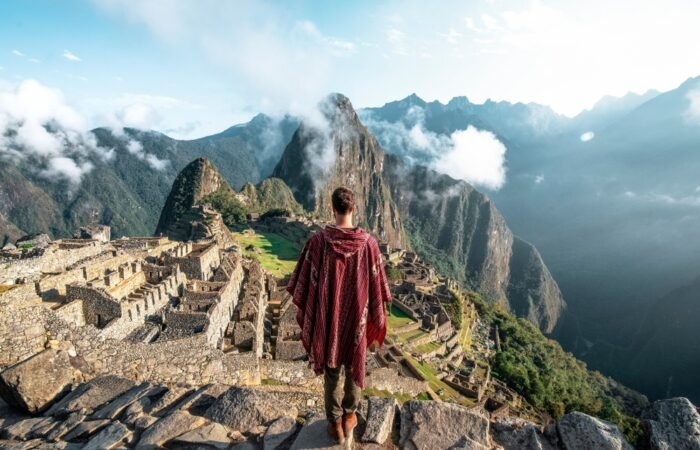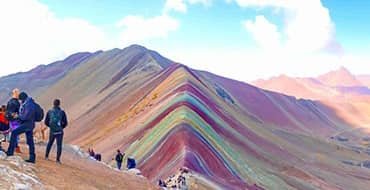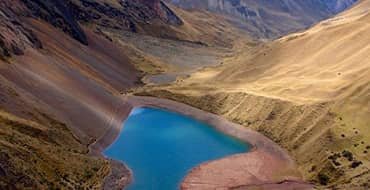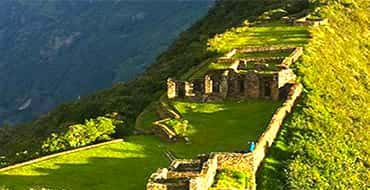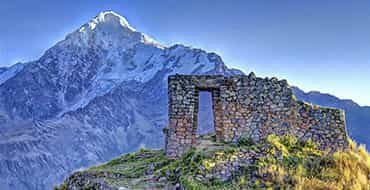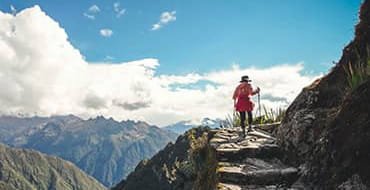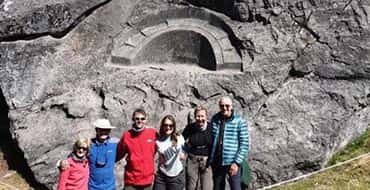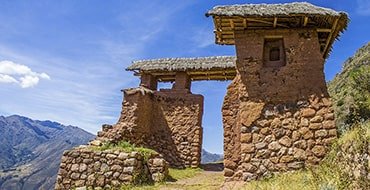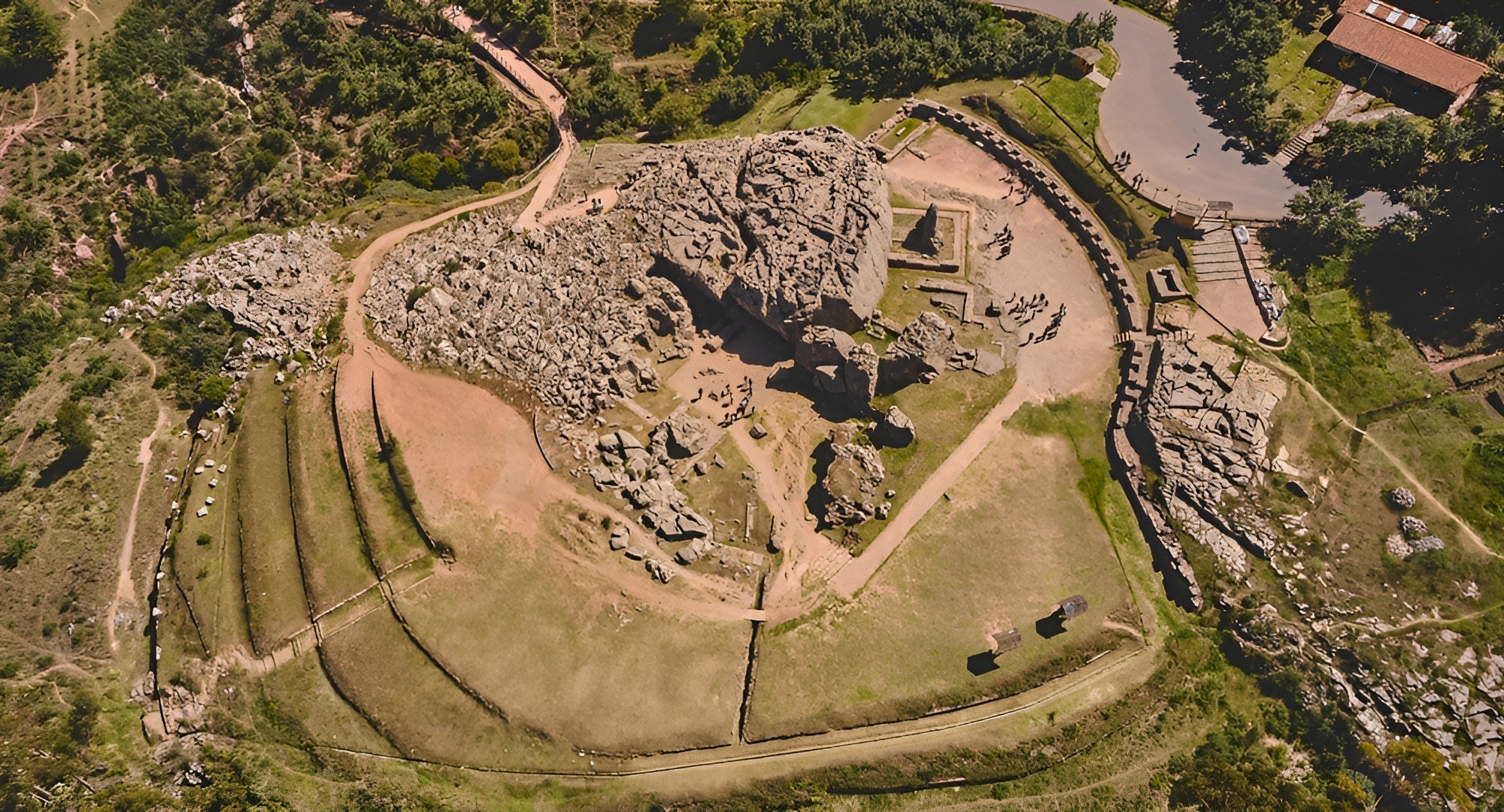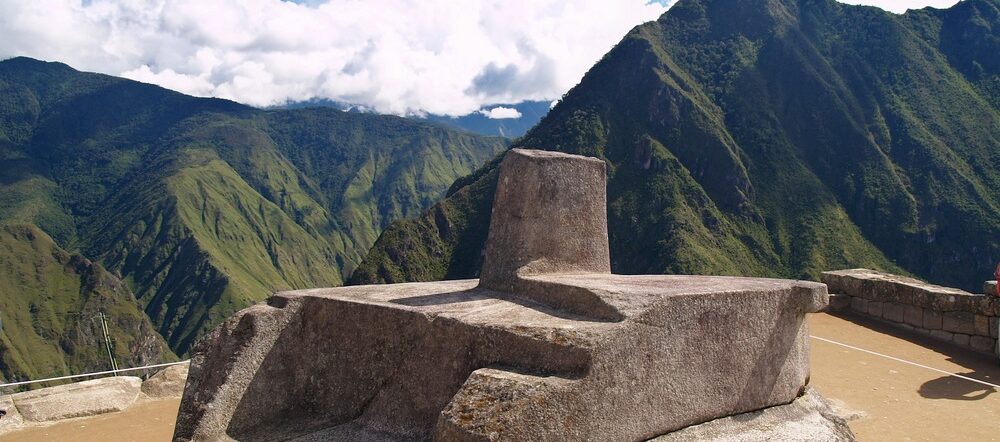
Introduction to Machu Picchu
Machu Picchu, a UNESCO World Heritage Site located in the Peruvian Andes, is often regarded as one of the most significant archaeological treasures in the world. Built in the 15th century by the Inca emperor Pachacuti, this stunning citadel is believed to have served as a royal estate or a religious site. Its placement on a mountainous ridge, over 2,400 meters above sea level, adds to its enigmatic allure and strategic importance in Incan history.
The site showcases remarkable engineering skills, featuring agricultural terraces, sophisticated water management systems, and meticulously constructed stone buildings. Machu Picchu reflects the high level of architectural and cultural sophistication attained by the Inca civilization. Its construction aligns with astronomical patterns, implying a profound understanding of celestial movements. This deep connection to nature and the cosmos enhances the historical importance of the site.
Machu Picchu’s cultural relevance extends beyond its architectural genius. It symbolizes the glory of the Incan Empire and serves as a vital link to the indigenous heritage of Peru. It attracts thousands of tourists each year, drawing individuals fascinated by its majestic beauty and the mysteries that surround it. The site was largely forgotten until the early 20th century when American historian Hiram Bingham introduced it to the world. Since then, it has gained fame as one of the New Seven Wonders of the World, further elevating its status as a must-visit destination.
The natural surroundings of Machu Picchu complement its historical significance. The breathtaking scenery, with steep cliffs and lush greenery, creates an otherworldly experience for visitors. As we delve deeper into the intricacies of Machu Picchu, one feature that stands out is the Intihuatana Stone. This sacred stone, often referred to as the “hitching post of the sun,” holds particular significance, making it essential to understanding the myriad mysteries associated with this remarkable site.
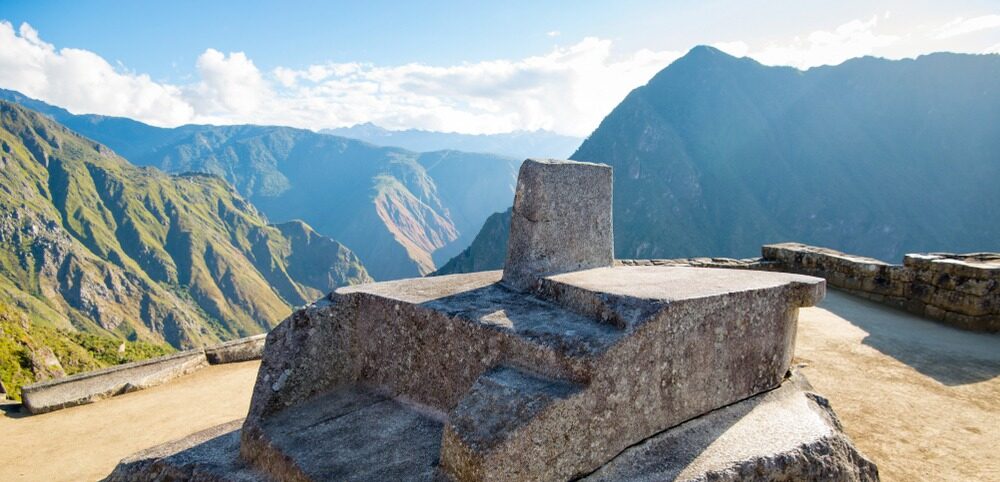
What is the Intihuatana Stone?
The Intihuatana Stone, often referred to as the “hitching post of the sun,” is a remarkable archaeological feature found in the ancient Incan citadel of Machu Picchu, located in the Andes of Peru. This meticulously carved granite stone measures approximately 1.2 meters in height and 0.9 meters in width, showcasing the extraordinary skill of Incan stone masons. Its distinct shape resembles a pyramid with a rounded apex, leading to various interpretations regarding its purpose in Incan culture.
Positioned at the highest point in Machu Picchu, the Intihuatana Stone occupies a site of significant visibility within the archaeological complex. The stone itself is part of a larger ceremonial area, surrounded by various structures that include temples, terraces, and other ritualistic locations. Notably, the stone is aligned with the sun, which indicates its potential role in solar observations and agricultural calendars, essential features of Incan society.
The unique characteristics of the Intihuatana Stone extend beyond its physical appearance. The stone features a polished surface that is highly regarded for its aesthetic appeal and functional attributes. Surrounding the stone are niches and altars that may have facilitated rituals or served as offerings to the deities. Furthermore, the surrounding architecture reflects the Incan principle of harmony with nature, strategically positioned to enhance the landscape’s natural beauty while safeguarding the stone’s sanctity.
The Intihuatana Stone’s significance remains a topic of scholarly debate, with theories ranging from its use for astronomical observations to its role as a religious site imbued with spiritual meaning. Regardless of its precise function, the stone serves as a testament to the advanced knowledge and engineering capabilities of the Inca civilization, providing invaluable insights into their cultural and spiritual life.
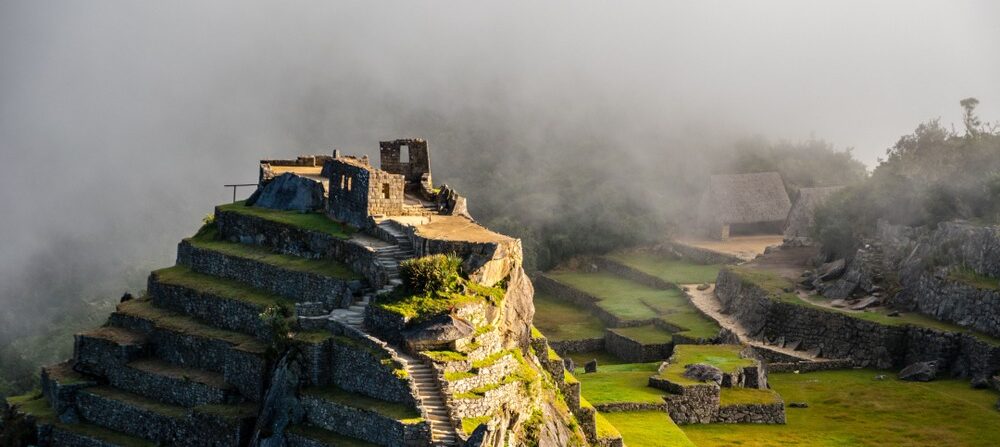
Historical Significance of the Intihuatana Stone
The Intihuatana Stone, often referred to as a ritual stone associated with astronomical functions, holds considerable historical significance within Incan culture. Positioned at the ruins of Machu Picchu, this enigmatic structure reflects the Incas’ profound connections with their environment and their sophisticated understanding of agricultural cycles. As a society deeply intertwined with nature, the Incas utilized the Intihuatana as a ceremonial observatory, believed to have been pivotal in marking key agricultural periods, thereby aiding in the timing of planting and harvesting crops.
Several theories surrounding the stone’s purpose suggest that it was revered as a spiritual link to the gods. It is widely understood that the Incas practiced a form of nature worship, and the Intihuatana may have served as an important site for rituals aimed at ensuring agricultural productivity and favorable weather conditions. Historical accounts indicate that priests, upon reaching the site, conducted offerings and ceremonies to venerate the sun god, Inti. The stone is thought to reflect the alignment of celestial bodies, which was crucial for the Incas to establish agricultural and ceremonial calendars.
Ethnographic studies provide further insight into the significance of the Intihuatana within the Incan societal framework. The stone exemplifies advanced architectural and astronomical knowledge, demonstrating the Incas’ ability to harmonize their daily lives with seasonal changes. Research suggests that the alignment of the stone with the sun’s movements during specific solstices further underscores its role as a tool for agricultural innovation. Thus, the Intihuatana Stone transcends its physical form, emblematic of the intricate relationship shared by the Incas with their land, celestial observations, and spiritual beliefs.
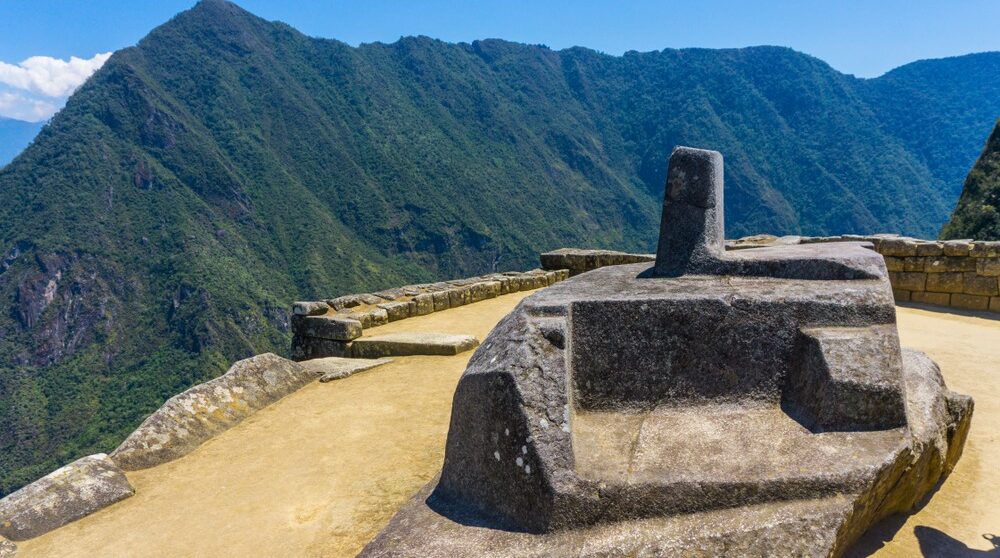
Symbolism and Interpretations
The Intihuatana Stone, a prominent feature of Machu Picchu, has been the subject of extensive scholarly research and debate, leading to various interpretations of its symbolism and function. One of the most widely held theories suggests that the stone served as a ritual site, potentially used in ceremonies dedicated to the sun deity, Inti. This interpretation aligns with the Andean cosmology, where the sun played a vital role in agriculture and the daily lives of the Inca people. The very name ‘Intihuatana’ translates to ‘the place where the sun is tied,’ signifying a close relationship between the stone and solar worship.
Further examination presents the possibility of the Intihuatana Stone functioning as a calendar. Some archaeologists propose that the stone was strategically positioned to align with solar events, such as solstices and equinoxes. During these times, shadows cast by the stone may have indicated specific agricultural periods or significant events in the Inca calendar, emphasizing the community’s dependence on solar cycles for their sustenance and agricultural practices.
In addition to its presumed ritualistic and calendrical functions, the Intihuatana Stone has also garnered attention as an astronomical observatory. Certain scholars argue that the stone’s orientation may have allowed ancient astronomers to accurately track celestial bodies, crucial for navigation and agricultural planning. This interpretation highlights the advanced understanding of astronomy possessed by the Inca civilization, demonstrating their capacity to integrate spiritual beliefs with practical applications.
While these theories offer different insights into the Intihuatana Stone’s role, it is essential to consider that the exact purpose of this enigmatic structure may remain elusive. The multifaceted interpretations reflect the rich tapestry of Inca culture and the continuing intrigue surrounding Machu Picchu and its extraordinary historical significance.
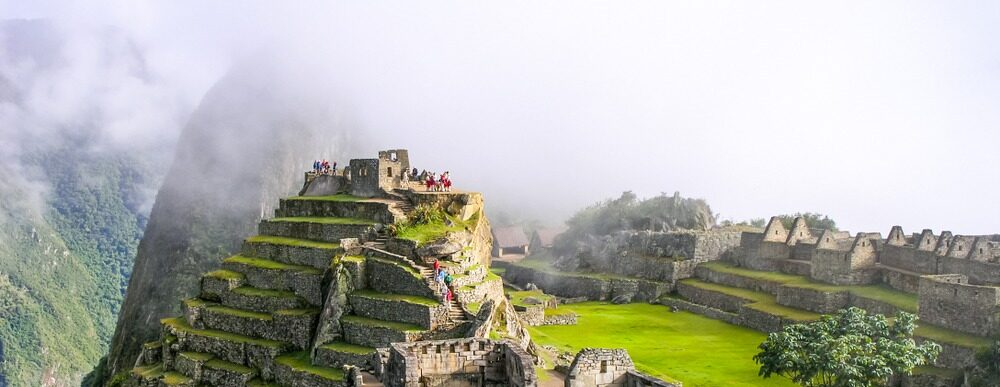
Indigenous Perspectives and Folklore
The Intihuatana Stone, often referred to as the “Hitching Post of the Sun,” holds profound significance for the indigenous Quechua communities in Peru. For these groups, the stone is not merely an archaeological artifact; it embodies their ancestral connections and spiritual beliefs, acting as a symbol of their cultural heritage. According to local folklore, the Intihuatana was used by Inca priests for astronomical observations and ceremonial rituals linked to agriculture and solar worship, reinforcing the intimate relationship between the Quechua people and their environment.
Modern-day Quechua individuals often recount stories passed down through generations, detailing how the stone served as a focal point in agricultural calendars, helping to mark critical planting and harvesting times. This relationship between the Intihuatana and traditional agricultural practices highlights the stone’s role in sustaining both the land and the community’s cultural identity. Interviews with local residents reveal that many view the Intihuatana not only as a remnant of the Inca Empire but also as a living connection to their ancestors and history. They often express a belief that the stone possesses a unique energy, regarded as a source of strength and spiritual guidance.
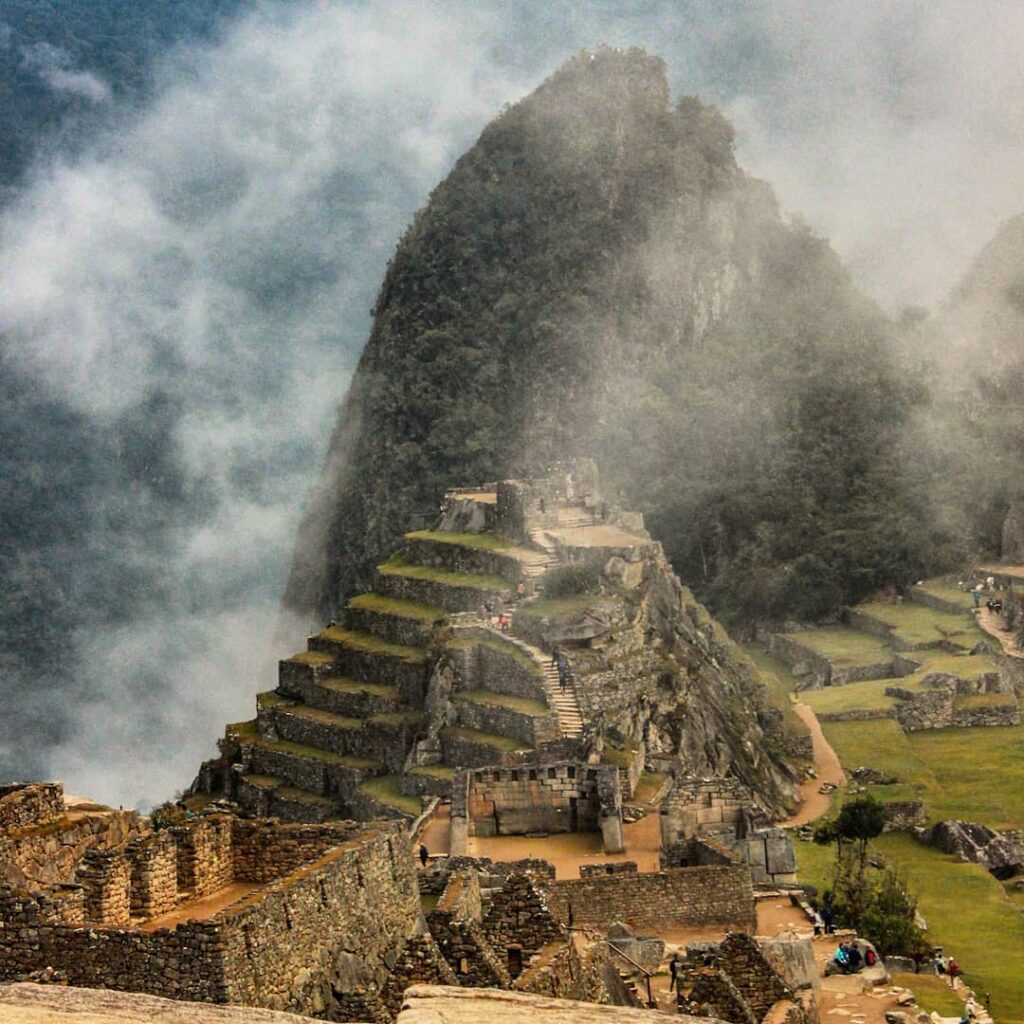
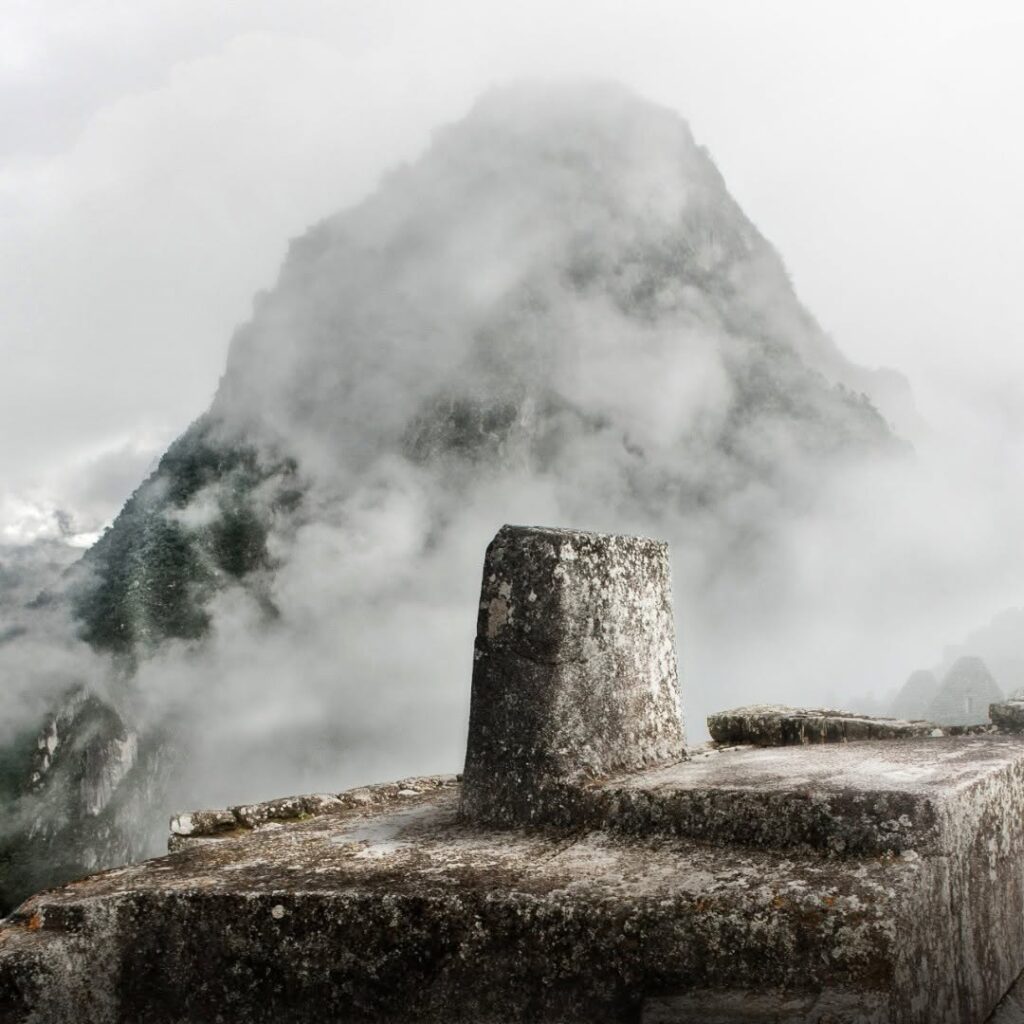
The Intihuatana Stone in Popular Culture
The Intihuatana Stone, a quintessential element of Machu Picchu, has transcended its historical and archaeological significance, permeating various aspects of popular culture. This stone, often referred to as the “Hitching Post of the Sun,” has been featured in numerous documentaries that delve into the mysteries of the Incan civilization and the architectural marvel of Machu Picchu. Such visual representations not only serve to educate viewers about the stone’s function and symbolism but also enhance its allure as a focal point of ancient Incan spirituality.
In literature, the Intihuatana Stone has become a symbol of connection to the cosmos and has inspired numerous authors in works that explore themes of ancient wisdom and spirituality. These literary depictions often romanticize the stone, elevating it to a mythical status that draws from its enigmatic aura. The stone’s representation in fiction can also serve to ignite curiosity in readers about Peru’s rich cultural heritage, often prompting journeys to the site itself as part of a broader exploration of the Incan legacy.
Moreover, the Intihuatana Stone plays a crucial role in the promotion of tourism in Peru. Many travel guides and promotional materials spotlight the stone as a must-see landmark, tapping into the global fascination with both historical mysteries and cultural symbols. As travelers flock to Machu Picchu, they often seek to connect with the past through firsthand experiences involving the Intihuatana, which augments its importance as a cultural icon. In this manner, the stone serves not only as a historical artifact but also as a beacon that draws visitors from around the world, enhancing the cultural tapestry of contemporary Peru.
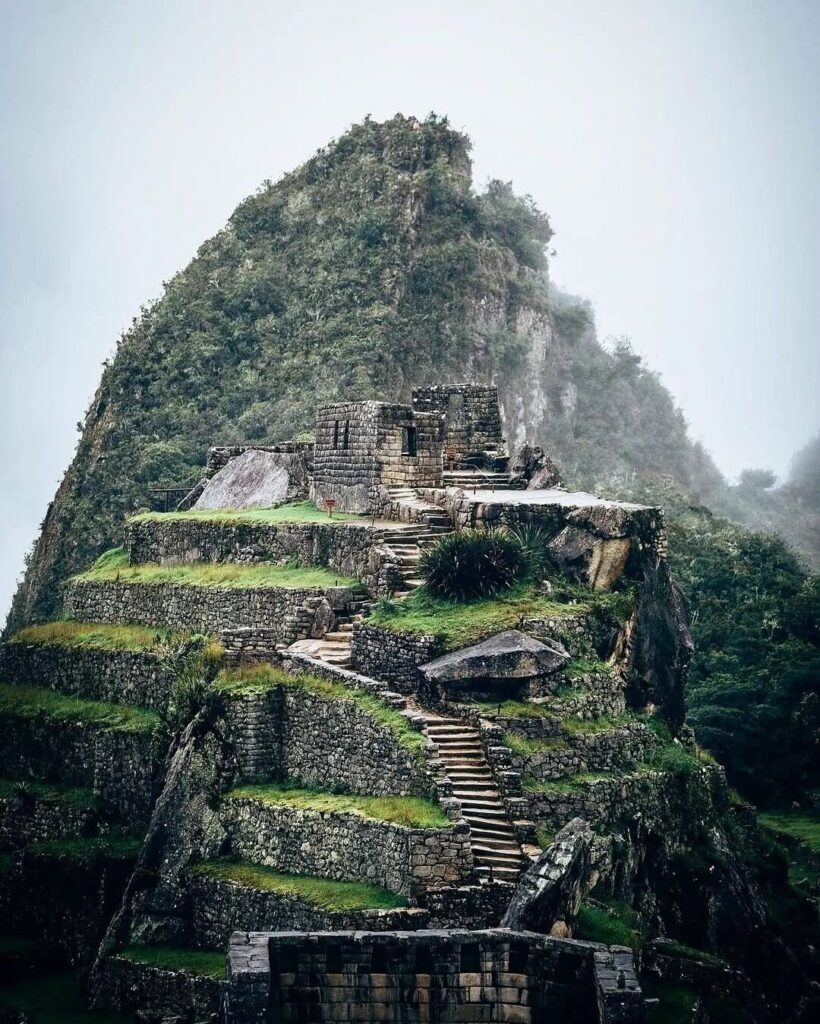
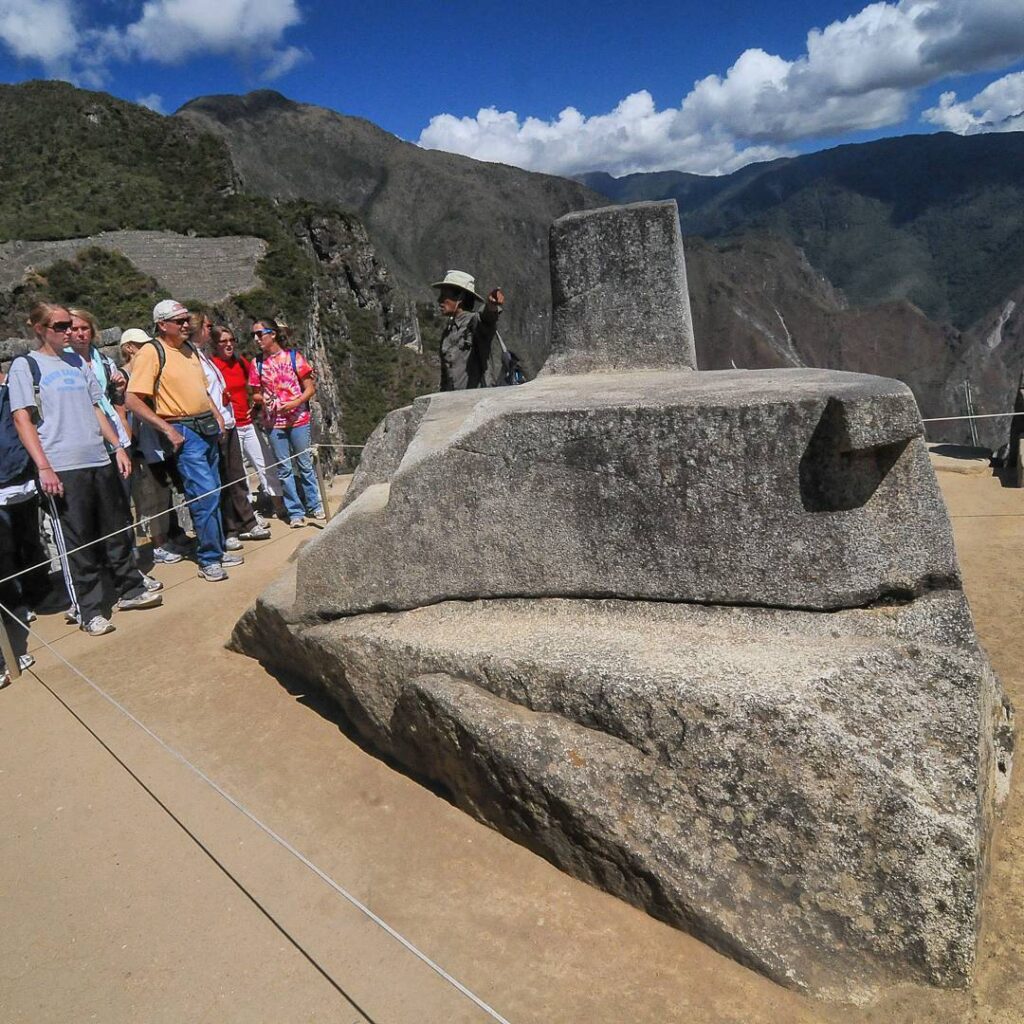
Conservation Efforts and Challenges
The Intihuatana Stone, a significant relic associated with Incan spirituality and astronomy, faces numerous conservation challenges as it remains a focal point for visitors to Machu Picchu. The primary threats to the preservation of this ancient artifact stem from an increase in tourism, which has surged significantly over the past few decades. Each year, millions of tourists flock to this UNESCO World Heritage Site, leading to heightened foot traffic that can contribute to soil erosion and structural instability around the stone. To combat these issues, the Peruvian government and various environmental organizations have initiated several conservation efforts aimed at safeguarding the Intihuatana.
One notable initiative focuses on regulating visitor access to sensitive areas surrounding the stone. By implementing timed entry and guided tours, the intention is to minimize the direct impact on the artifact while educating tourists about its historical importance. Additionally, efforts are underway to enhance protective barriers around the Intihuatana Stone that help mitigate wear and tear, reducing the potential for damage from close interactions.
Climate change also poses a significant threat to the conservation efforts. Shifts in weather patterns and increased rainfall can lead to additional erosion and destabilization of the surrounding landscape. Consequently, ongoing monitoring of environmental conditions and soil stability is critical to preserving the Intihuatana. Collaborative research projects with local universities and international conservation bodies aim to devise strategies to address these challenges effectively.
Ultimately, the importance of sustainable tourism cannot be overstated in the context of preserving the Intihuatana Stone. Educating visitors about the impacts of their actions on cultural heritage sites is essential for fostering a sense of responsibility. By promoting eco-friendly practices and respecting the significance of such historical artifacts, it may be possible to ensure the Intihuatana Stone remains a symbol of Incan civilization for future generations.
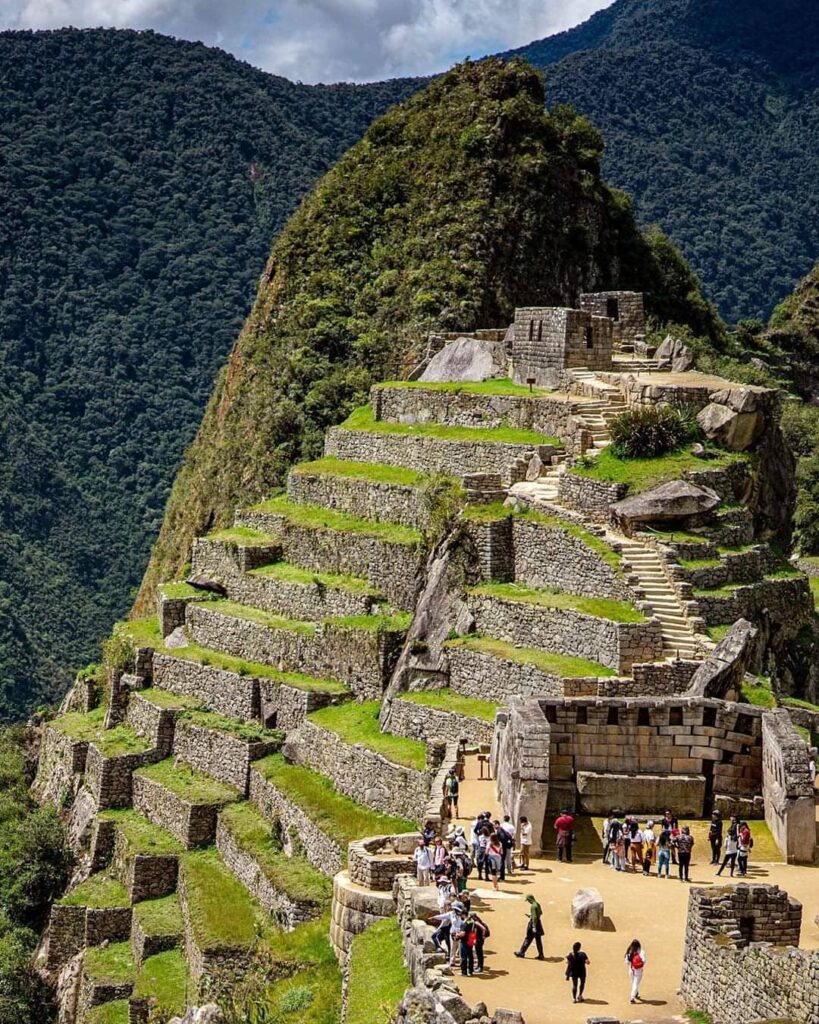
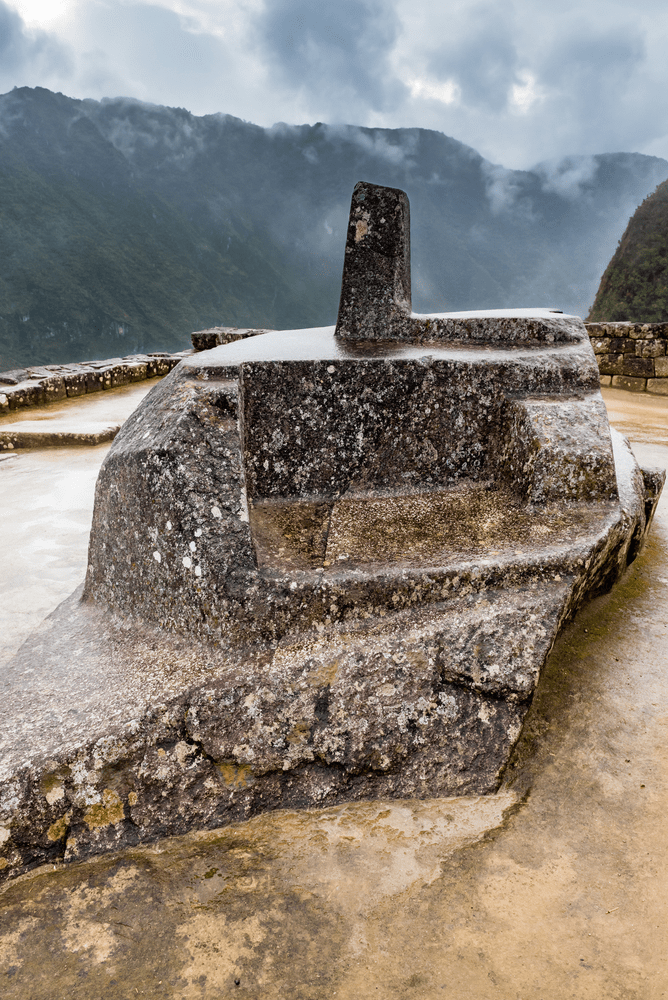
Visiting the Intihuatana Stone: Practical Information
Visiting the Intihuatana Stone at Machu Picchu is an experience that demands careful planning and respect for this ancient site. First, it is essential to secure tickets to Machu Picchu in advance, as visitor numbers are regulated to protect the integrity of the area. Tickets can be purchased online or through travel agencies, but it is advisable to book well ahead of your proposed travel dates to ensure availability, especially during peak seasons.
Upon arrival, be prepared for a journey that involves ascending the site, which is situated at a high altitude. Many visitors experience altitude sickness, so it is essential to acclimatize beforehand; allow a few days in Cusco or the Sacred Valley to adjust. Additionally, bring plenty of water and snacks, as exploring the archaeological site can take several hours.
The Intihuatana Stone, or “hitching post of the sun,” is a key feature of Machu Picchu, and visitors should approach it with reverence. While it is permissible to take photographs, climbing on or touching the stone is discouraged to preserve its condition and to respect its historical significance. Guided tours are highly recommended, as knowledgeable guides can provide valuable insights about the stone’s functions and the broader cultural context within Incan civilization.
Conservation guidelines are strictly enforced, so it is vital to stay on marked paths and adhere to all posted regulations. This ensures the protection of both the Intihuatana Stone and the overall site, allowing future generations to appreciate the wonders of Machu Picchu. By respecting these guidelines and preparing adequately for your visit, you can fully appreciate the mystique of the Intihuatana Stone and its place in history.
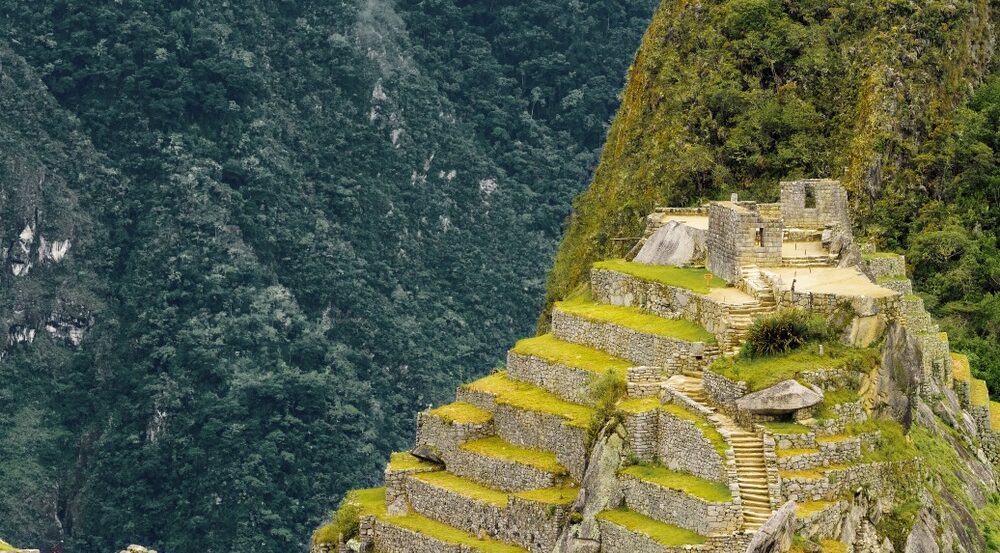
Conclusion: The Enduring Mystique of the Intihuatana Stone
The Intihuatana Stone, a remarkable artifact located within the iconic ruins of Machu Picchu, serves as a profound emblem of Incan ingenuity and spirituality. Throughout this exploration, we have uncovered various facets of its purpose, from its possible usage in astronomical observation to its vital role in Incan rituals. Each interpretation adds layers to our understanding of this ancient site, illustrating the complexity of the Incan civilization. The enduring mystique surrounding the stone continues to inspire curiosity and intrigue within the realms of archaeology and cultural heritage.
As we reflect on its significance, it becomes clear how the Intihuatana Stone is not merely a historical artifact but a symbol of a rich cultural legacy. Its presence at Machu Picchu beckons visitors and scholars alike to delve deeper into the mysteries of a society that thrived many centuries ago. The stone encapsulates the spiritual beliefs of the Inca, representing their connection to the cosmos and the natural world. Consequently, it invites ongoing exploration and reverence.
Moreover, the need for preservation of such sites is paramount. Efforts to protect the Intihuatana Stone and its surrounding environment ensure that future generations can appreciate this historical landmark. The balance between tourism and conservation hinges on careful management and respect for the site’s cultural heritage. Thus, Machu Picchu, with the Intihuatana Stone at its core, embodies a portal to understanding the depths of human intuition and experience.
Ultimately, the magic of the Intihuatana Stone lies not only in what it presents but also in what it conceals; it is this duality that secures its place as an enduring symbol of the Incan legacy and a vital part of our shared human history.
